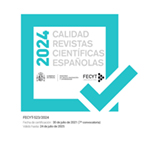Cultural Landscapes of the Desert Coast of Atacama, Chile. Dialogue between Ethnography and Archeology for the Study of the Archaeological Site Copaca 1
Abstract
The archaeological site Copaca 1, located in the Province of Tocopilla, Second Region of Antofagasta, Chile, is studied through an ethnoarchaeological approach. The site is an extensive coastal cultural shell midden, whose chronological range fluctuates between 4540 ± 25 AP and 7688 AP (UGAM-9145, coal). It has an intimate relationship with its surrounding environment, including within its ichthyological and malacological evidence certain taxa that are still exploited in the place by divers and artisanal fishermen. Within this framework, an ad hoc ethnography was carried out with one of the last mobile fishermen in the region under study, to guide our interpretations about the use of coastal space around the site. A dialogue between both contexts is articulated, managing to understand the existence of certain work specializations aimed at different coastal spaces. Likewise, the main role that assumes knowledge of topography, climate, oceanography and marine flora and fauna in the establishment of a coastal camp is identified.
Downloads
Article download
License
In order to support the global exchange of knowledge, the journal Revista Española de Antropología Americana is allowing unrestricted access to its content as from its publication in this electronic edition, and as such it is an open-access journal. The originals published in this journal are the property of the Complutense University of Madrid and any reproduction thereof in full or in part must cite the source. All content is distributed under a Creative Commons Attribution 4.0 use and distribution licence (CC BY 4.0). This circumstance must be expressly stated in these terms where necessary. You can view the summary and the complete legal text of the licence.









